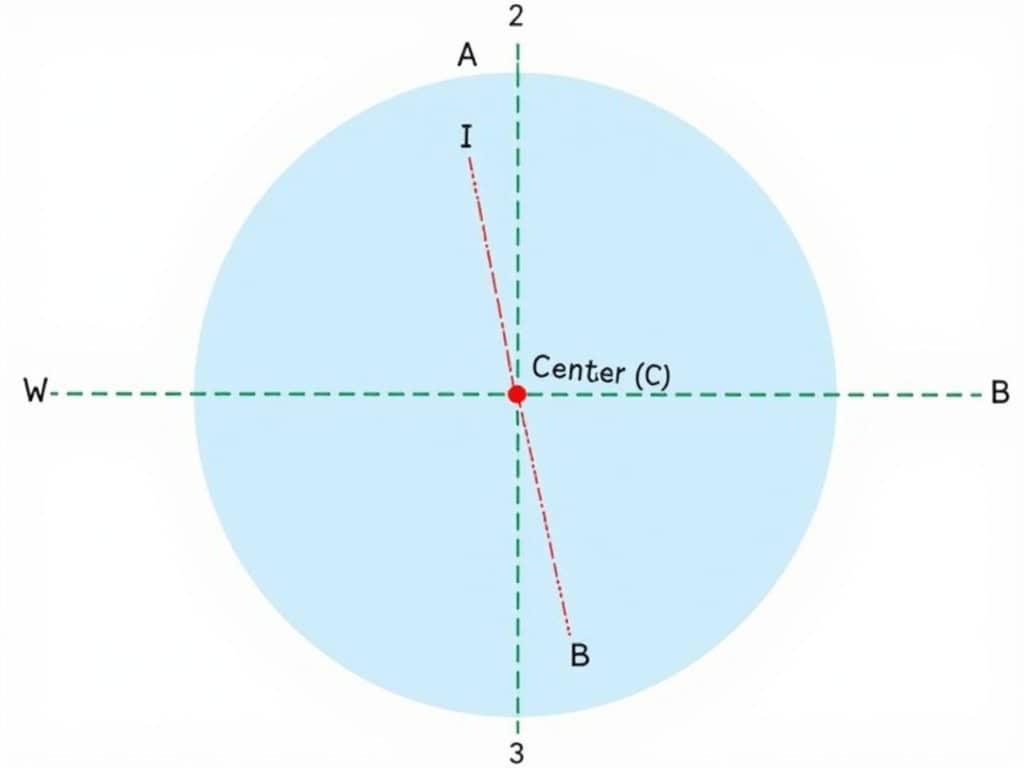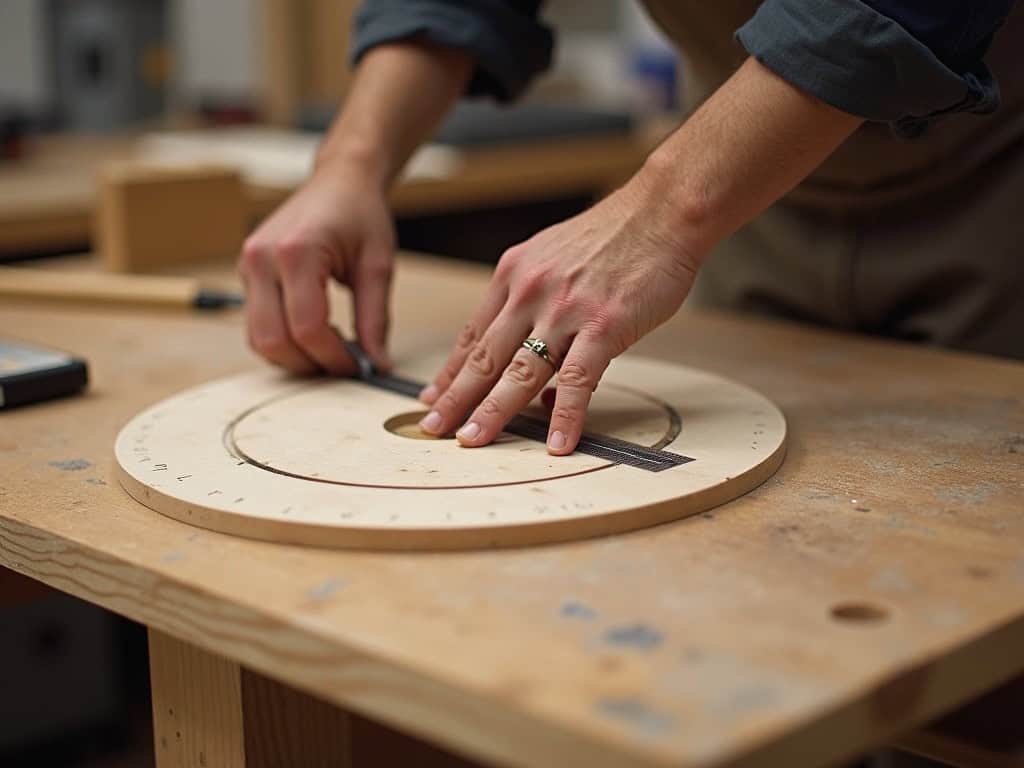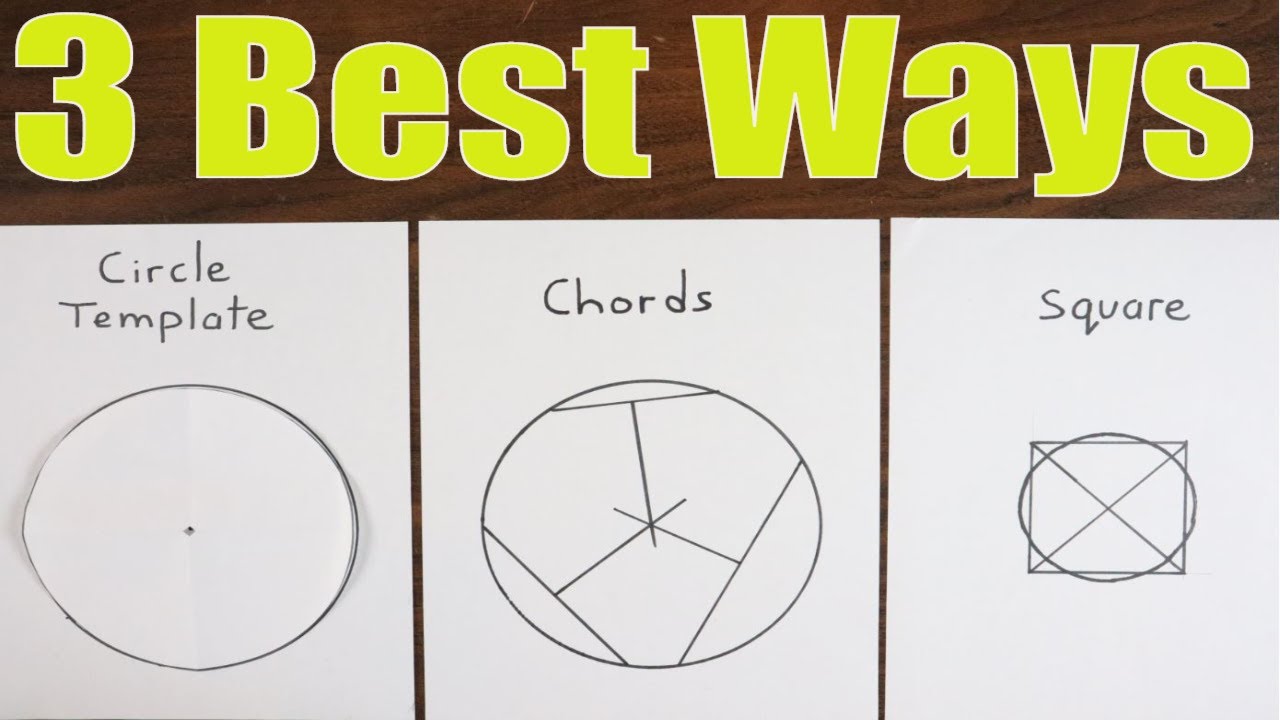Finding the center of a circle is a fundamental skill that comes in handy for countless projects, from woodworking to metalworking. Whether you’re installing a ceiling fan or creating a custom table top, these proven methods will help you locate the exact center with precision.
| Method | Tools Needed | Accuracy Level | Best For |
|---|---|---|---|
| Perpendicular Bisector | Ruler, pencil, compass | High | Small to medium circles |
| Carpenter’s Square | Square, pencil | Medium | Large circles |
| Digital Tools | Laser measure, calculator | Very High | Professional work |
| Template Method | Circle template | Medium | Quick estimates |

The Perpendicular Bisector Method 🎯
This classic geometric method is foolproof and requires minimal tools:
Required Tools
- Straight edge or ruler
- Pencil
- Compass or string
- Precision measuring tool
Step-by-Step Process
- Draw any chord across the circle
- Draw a second chord parallel to the first
- Connect the midpoints of these chords
- The center lies on this line
- Repeat with two more chords
- The intersection marks the center
The Carpenter’s Square Method 📐
This method works particularly well for large circles:
Required Equipment
- Carpenter’s square
- Pencil
- Straight edge
- Measuring tape
Process Steps
- Place the square against the circle’s edge
- Mark where both arms touch the circle
- Draw lines from these points
- Repeat from a different position
- The lines’ intersection is the center
Digital Tools and Technology ⚡
Modern technology offers precise solutions:
| Tool Type | Accuracy | Price Range |
|---|---|---|
| Laser Measure | ±1/16″ | $50-200 |
| Digital Calipers | ±0.001″ | $30-150 |
| Smart Apps | Varies | Free-$10 |
For professional work, consider using precision tool sets that include digital measuring capabilities.
Tips for Perfect Centers
Accuracy Guidelines
- Work on a flat, stable surface
- Use sharp pencils for precise marks
- Double-check all measurements
- Keep tools clean and calibrated
When working with power tools near your marks, always wear appropriate safety glasses and follow proper safety protocols.
Circle Templates and Tools 🔧
Professional circle-finding tools can speed up the process significantly:
Popular Tools
- Center-finding rules
- Trammel points
- Digital center finders
- Circle templates
Practical Applications
Different scenarios require different approaches:
| Application | Best Method | Why It Works |
|---|---|---|
| Woodworking | Carpenter’s Square | Works with large pieces |
| Metalwork | Digital Tools | Highest precision |
| Construction | Perpendicular Bisector | No special tools needed |
| Crafts | Templates | Quick and simple |
Special Cases and Solutions
Large Circles
- Use string and pencil method
- Employ laser measuring devices
- Work with a partner for better accuracy
Partial Circles
- Use three-point method
- Calculate using chord measurements
- Apply digital angle finders
Common Mistakes to Avoid ⚠️
- Not checking multiple points
- Using worn or damaged tools
- Failing to account for material thickness
- Rushing the measurement process
Professional Tips
After years of experience in precision work, here are key insights:
Expert Guidelines
- Mark centers with a center punch
- Use precision screwdrivers for small adjustments
- Keep backup measurement methods ready
- Document measurements for future reference
Advanced Techniques
For professional-grade accuracy:
Mathematical Method
- Measure diameter at three points
- Calculate intersecting points
- Use geometric formulas
- Verify with digital tools
Industry-Specific Applications
Different fields require unique approaches:
Manufacturing
- CNC machining centers
- Automated measuring systems
- Digital plotting tools
Construction
- Large-scale layouts
- Structural calculations
- Foundation marking
Troubleshooting Guide
When things don’t line up:
Common Issues and Solutions
- Uneven surfaces: Use leveling tools
- Irregular shapes: Apply multiple methods
- Poor visibility: Use contrasting markers
- Material variations: Account for thickness
Final Considerations 🎯
Remember these key points for success:
Best Practices
- Always verify measurements twice
- Keep tools properly calibrated
- Document your process
- Use appropriate safety gear
For complex projects, consider investing in quality measuring tools and precision equipment. The right tools make a significant difference in accuracy and efficiency.
The ability to find a circle’s center accurately is a fundamental skill that improves with practice. Whether you’re working on a simple craft project or a complex industrial application, these methods provide reliable results when executed properly. Remember to maintain your tools, follow safety protocols, and take your time to ensure precise measurements.








